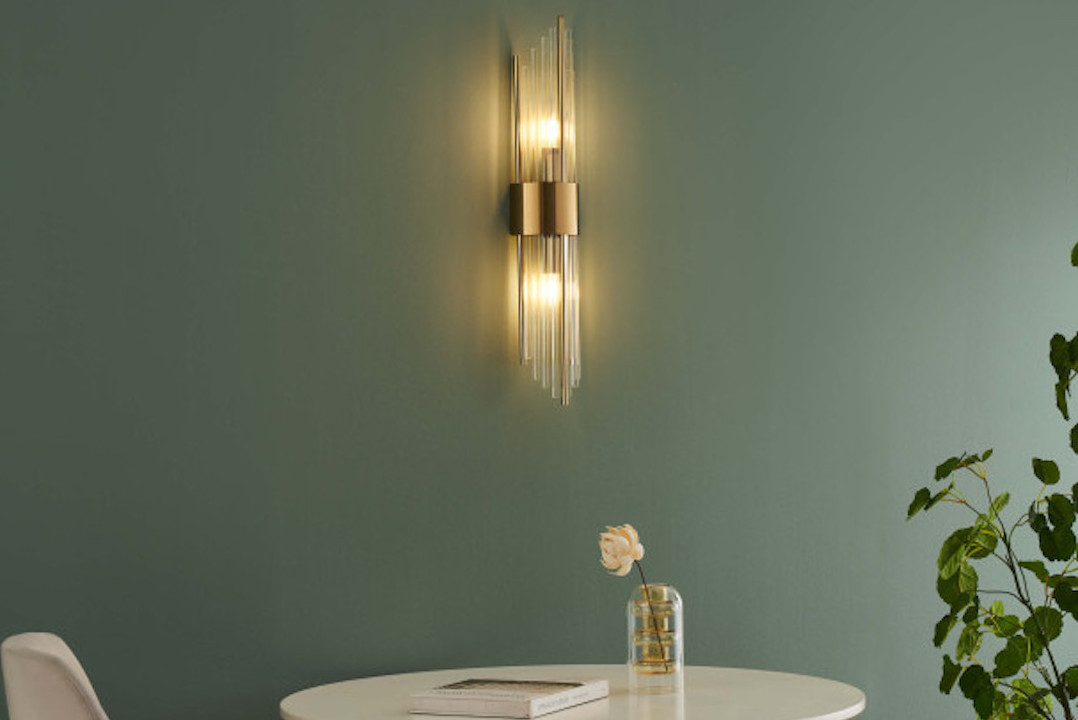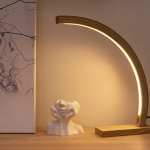Selecting the appropriate style for your home is a crucial step in creating a cohesive and inviting atmosphere. The style you choose should reflect not only your personal taste but also the architectural features of your home. Whether you lean towards modern minimalism, rustic charm, or classic elegance, each style carries its own unique characteristics that can significantly influence the overall aesthetic.
For instance, a modern style often emphasizes clean lines, open spaces, and a neutral color palette, while a rustic approach may incorporate natural materials like wood and stone, evoking a sense of warmth and comfort. It is essential to consider how these styles will harmonize with existing elements in your home, such as furniture, decor, and even the layout of the rooms. Moreover, the right style can enhance the functionality of your space.
For example, if you have a small apartment, opting for a minimalist design can create an illusion of spaciousness, making the area feel larger and more open. On the other hand, if you have a larger home, you might want to explore eclectic styles that allow for more creativity and personalization. It’s also worth noting that trends in interior design are ever-evolving; therefore, while it’s important to choose a style that resonates with you, it’s equally vital to consider timeless elements that will withstand the test of time.
By thoughtfully selecting a style that aligns with both your preferences and the practical aspects of your living space, you can create an environment that is not only visually appealing but also functional and comfortable.
Placement and Installation Tips
Creating a Functional and Inviting Space
The placement and installation of furniture and decor play a crucial role in defining the flow and functionality of your space. When arranging furniture, it is essential to consider the natural pathways within a room. Ensuring that there is enough space for movement can prevent a cramped feeling and promote a more inviting atmosphere.
Arranging Furniture for Optimal Flow
For instance, in a living room, positioning sofas and chairs in a way that encourages conversation while allowing for easy access to other areas can create a welcoming environment. Additionally, considering the scale of your furniture in relation to the size of the room is crucial; oversized pieces in a small space can overwhelm the area, while smaller items in a large room may feel lost and insignificant.
Installing Decorative Elements with Care
Installation also requires careful thought, particularly when it comes to wall art and decorative elements. The height at which you hang artwork can dramatically affect how it is perceived within the space. A common guideline is to hang art at eye level, which typically means placing the center of the piece around 57 to 60 inches from the floor. However, this can vary based on the specific context of your room and the height of your furniture. Additionally, grouping smaller pieces together can create a gallery wall effect that adds visual interest without overwhelming the space.
Incorporating Artistic Elements
Artistic elements are essential in transforming a house into a home, as they infuse personality and character into your living space. Incorporating art can take many forms, from paintings and sculptures to textiles and handmade crafts. One effective way to showcase artistic elements is through statement pieces that draw attention and serve as focal points within a room.
For instance, a large abstract painting can serve as an eye-catching centerpiece in a living room or hallway, while a unique sculpture can add depth and intrigue to an entryway or garden. The key is to select pieces that resonate with you personally and reflect your individual style, as this will create an environment that feels authentic and inviting. In addition to traditional art forms, consider integrating artistic elements through functional items such as furniture or decor that feature unique designs or craftsmanship.
Handmade pottery, artisanal textiles, or custom furniture pieces can add layers of texture and interest to your space while also serving practical purposes. Furthermore, don’t shy away from mixing different artistic styles; combining contemporary art with vintage finds can create an eclectic yet harmonious look that tells a story about your tastes and experiences. By thoughtfully incorporating artistic elements into your home, you not only enhance its visual appeal but also create an environment that inspires creativity and self-expression.
Creating Ambiance with Light
Lighting Buyance is one of the most powerful tools in interior design, capable of dramatically altering the mood and ambiance of any space. The right lighting can create warmth and intimacy or evoke a sense of spaciousness and clarity. To achieve this effect, it’s essential to layer different types of lighting: ambient, task, and accent lighting all play distinct roles in shaping the atmosphere of a room.
Ambient lighting provides overall illumination and sets the tone for the space; this can be achieved through ceiling fixtures or natural light from windows. Task lighting focuses on specific areas where activities take place—such as reading lamps beside chairs or under-cabinet lights in kitchens—ensuring functionality without sacrificing style. Accent lighting serves to highlight particular features or decor elements within a room, such as artwork or architectural details.
Using spotlights or wall sconces strategically can draw attention to these focal points while adding depth to the overall design. Additionally, consider incorporating dimmer switches to allow for flexibility in lighting levels; this enables you to adjust the ambiance according to different occasions or times of day. For instance, softer lighting during evening gatherings can create a cozy atmosphere, while brighter settings during daytime activities promote energy and focus.
By thoughtfully considering how light interacts with your space, you can craft an ambiance that enhances both comfort and aesthetic appeal.
Maximizing Functionality
Maximizing functionality within your home is essential for creating an efficient living environment that meets your needs. This involves not only selecting furniture that serves multiple purposes but also organizing spaces in ways that promote ease of use. For example, choosing a coffee table with built-in storage can help keep clutter at bay while providing a surface for drinks or books.
Similarly, utilizing vertical space through shelving units or wall-mounted storage solutions can free up floor space while keeping essentials within reach. In kitchens, incorporating pull-out drawers or lazy Susans can enhance accessibility and streamline meal preparation processes. Moreover, consider how each room in your home serves its intended purpose and whether adjustments can be made to improve functionality.
For instance, if you work from home, creating a dedicated workspace within your living area can help maintain focus while keeping work-related items organized. This could involve using stylish dividers or multifunctional furniture that blends seamlessly with your decor. Additionally, think about how traffic flows through your home; ensuring clear pathways between rooms can enhance accessibility and comfort for both residents and guests alike.
By prioritizing functionality alongside aesthetics, you can create spaces that are not only beautiful but also practical for everyday living.
Maintenance and Care
Maintaining your home is an ongoing process that requires attention to detail and regular upkeep to ensure its longevity and beauty. Different materials require varying levels of care; for instance, hardwood floors may need periodic refinishing while carpets should be vacuumed regularly and deep-cleaned occasionally to remove stains and allergens. Understanding the specific needs of your furnishings—whether they are upholstered pieces or wooden surfaces—can help you develop an effective maintenance routine that preserves their appearance over time.
Additionally, keeping surfaces dust-free not only enhances visual appeal but also contributes to a healthier indoor environment. Beyond cleaning routines, it’s important to address repairs promptly to prevent minor issues from escalating into major problems. This could involve tightening loose screws on furniture or addressing small leaks before they cause water damage.
Seasonal maintenance tasks should also be considered; for example, checking smoke detectors or cleaning gutters can help ensure safety and functionality throughout the year. Furthermore, investing in quality materials from the outset can reduce long-term maintenance needs; durable fabrics or finishes may require less frequent replacement or repair than cheaper alternatives. By prioritizing maintenance and care for your home’s elements, you can enjoy a beautiful living space that stands the test of time.
Budget-Friendly Options
Creating a beautiful home doesn’t have to break the bank; there are numerous budget-friendly options available that allow you to achieve your desired aesthetic without overspending. One effective strategy is to shop second-hand or vintage stores where unique finds often come at a fraction of the cost compared to new items. Thrift shops, flea markets, and online marketplaces can yield hidden treasures such as furniture pieces with character or decorative items that add personality to your space.
Additionally, consider DIY projects as an affordable way to personalize your home; repurposing old furniture with fresh paint or new upholstery can breathe new life into tired pieces while allowing you to express your creativity. Another approach is to focus on small changes that make a significant impact without requiring extensive renovations or large expenditures. Simple updates like changing hardware on cabinets or swapping out light fixtures can refresh the look of a room without substantial investment.
Incorporating plants into your decor is another cost-effective way to enhance ambiance; greenery not only adds color but also improves air quality within your home. Furthermore, consider seasonal decor swaps—changing out throw pillows or artwork according to different times of year can keep your space feeling fresh without requiring major purchases. By exploring these budget-friendly options, you can create an inviting home that reflects your style while remaining financially responsible.



